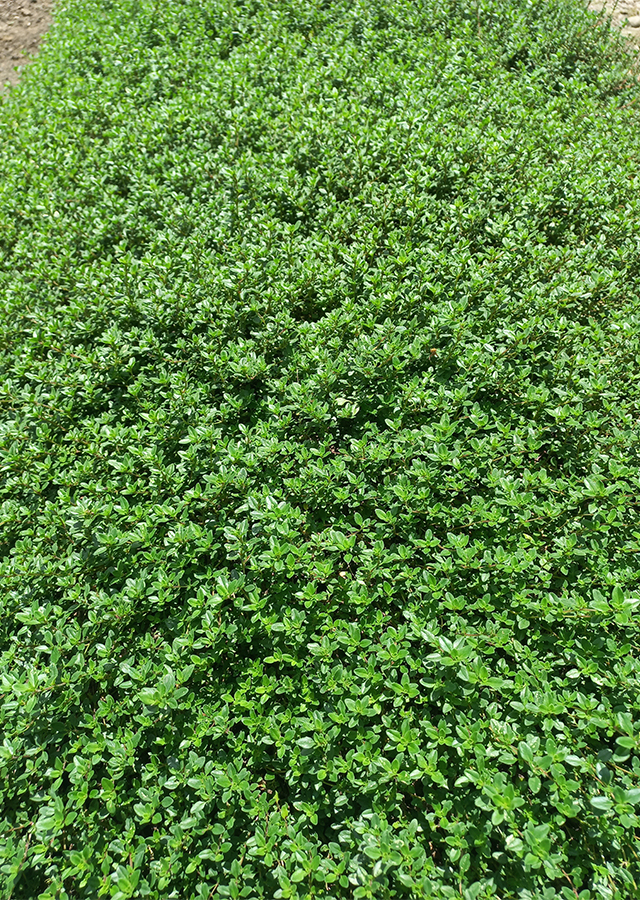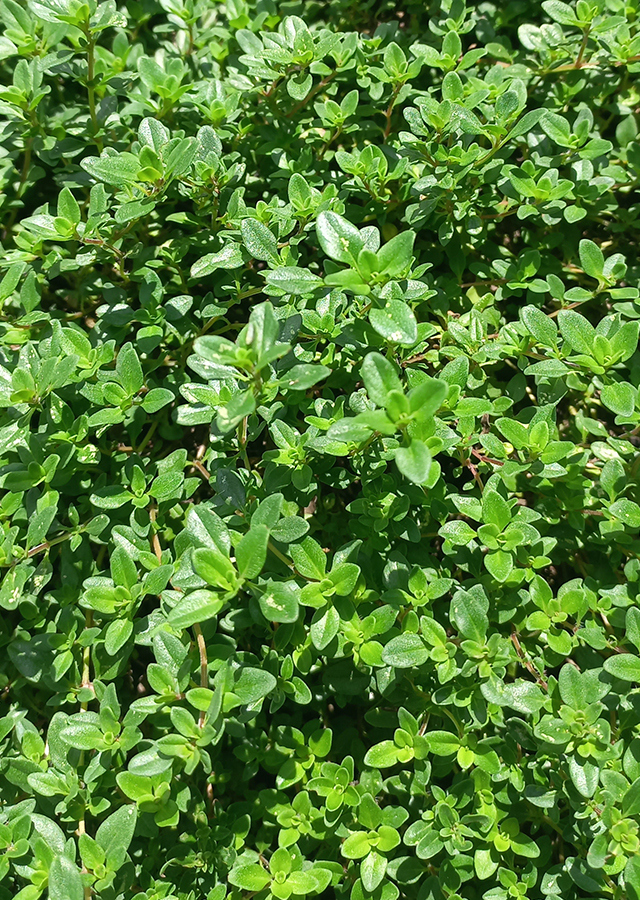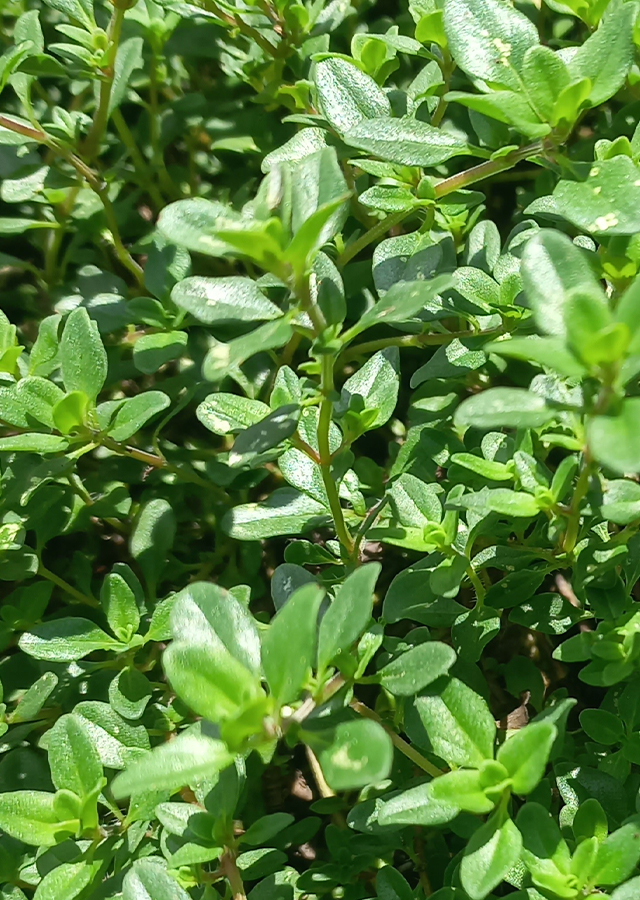Lemon Thyme
Thymus pulegioides L.
Lamiaceae
Location in our garden
Principal



Synonym
Thymus chamaedrys var. pulegioides (L.) Nyman
Habitus
Shrubs. An aromatic evergreen shrub that can grow up to 0.2 m tall.
Part Used
Leaves
Growing Requirements
Full Sunshine
Habitat
Roadside
Rocky Areas
Shrublands
Grassland
Overview
Thymus pulegioides is native to temperate areas of Europe. It is harvested from the wild for local use as a food, medicine, ornamental plant and source of materials. Greeks believed that thyme would bring courage and motivation and used thyme sprigs in baths and the clothes of knights before battles. The essential oil obtained from the leaves is also used in perfumery, as a mouth wash, deodorant, medicinally etc. It is excellent for culinary use, not only for its flavour but also because the leaves are softer than other thymes, making them easier to handle and better to use raw, in salads, and also used in cooked meals since they still maintain the flavour after being cooked for a long time.
Vernacular Names
No found data on this. Need further research.
Agroecology
Grows well between stepping stones on paths, tolerating light treading. Requires a light well-drained preferably calcareous soil in a sunny position. Succeeds in dry soils. Thymes dislike wet conditions, especially in the winter. A layer of gravel on the soil around them will help protect the foliage from wet soils. Plants are hardy to at least -10 °C.
Morphology
- Root - robust taproot.
- Stem - upright and creeping stems, often untidy and sometimes sinuous. The young stems are squared but become rounder and woody at the base as they age. The unique characteristic of this thyme is that the stems are only hairy along the edges. Long spikes of flower heads appear on the terminal part of the stem.
- Leaf - elliptic shape, with flat margins, marked nerves underneath and short stalks. The size varies between 3.5 and 14.5 mm long and 1.5 and 9 mm wide.Strongly aromatic, green, shiny and with long hairs only at the base. In some cultivars, the leaves can be variegated.
- Flowers - the inflorescence has a globose or spike form and varies between 7 to 14 mm in diameter. It is composed of tiny flowers and leaf-like bracts in several whorls around the stem, with the lowest whorls often separated. The colour is violet-pink with a fused corolla. They are two-lipped. The 4 stamens and pistil stick out from inside the corolla.
Cultivation
- Generative propagation is by seed - sow spring in a cold frame. Seed can also be sown in autumn in a greenhouse. Surface sow or barely cover the seed. Germination can be erratic. When they are large enough to handle, prick the seedlings out into individual pots and grow them on in the greenhouse for at least their first winter. Plant them out into their permanent positions in late spring or early summer, after the last expected frosts.
- Vegetative propagation is by division, cuttings and layering.
- Larger divisions can be planted out direct into their permanent positions. We have found that it is best to pot up smaller divisions and grow them on in light shade in a greenhouse or cold frame until they are growing away well.
- Cuttings of young shoots, 5 - 8 cm with a heel, May/early summer in a frame. Cuttings of half-ripe wood, 5 - 8 cm with a heel, mid summer in a frame.
- Layering - bend the stem down, hold it to the ground with a peg or rock, and cover it with soil.
Chemical Constituents
Rosmarinic acid is the main phenolic compounds, another phenols are luteolin-O-hexuronide, eriodictyol-O-hexuronide, and chrysoeriol hexoside.
Traditional Medicinal Uses
- Studies have confirmed that it has antoxidant, anti-ageing and neuroprotective, antifungal, antidiabetic, and antibacterial activities.
- The leaves, and especially the essential oil contained in them, are antiseptic, disinfectant and expectorant.
- It can be used as a homemade insect repellent. Crushing the leaves and rubbing them on your skin will repel annoying insects such as mosquitos.
Part Used
Reference Sources
- Fern, Ken. (2022). Useful Temperate Plants Database: Thymus pulegioides. https://temperate.theferns.info/plant/Thymus+pulegioides. 27-10-2023.
- Kew Royal Botanic Garden. (2023). Plants of the World Online: Thymus pulegioides L. https://powo.science.kew.org/taxon/urn:lsid:ipni.org:names:461562-1#:~:text=The%20native%20range%20of%20this,primarily%20in%20the%20temperate%20biome. 27-10-2023.
- Mediterranean Garden. (2023). Thymus pulegioides (Broad Leaf Thyme). https://mymediterraneangarden.com/plants/thymus-pulegioides/. 27-10-2023.
- Meriem Taghouti, Carlos Martins-Gomes, Judith Schäfer, Luis M Félix, João A Santos, Mirko Bunzel, Fernando M Nunes, Amélia M Silva. (2018). Thymus pulegioides L. as a rich source of antioxidant, anti-proliferative and neuroprotective phenolic compounds. Thymus pulegioides L. as a rich source of antioxidant, anti-proliferative and neuroprotective phenolic compounds - PubMed (nih.gov). DOI: 10.1039/c8fo00456k. 27-10-2023.
